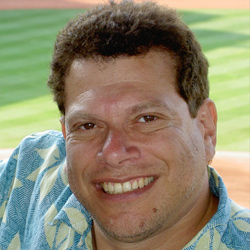Students Use NetLogo to Plan Mars Mission, Model New Societies
Uri Wilensky’s Introduction to Agent-based Modeling course teaches students to create models of complex systems
The first manned mission to Mars might be decades away, but Eric Forbush is already thinking about how to ensure its success.
A student in Northwestern’s spring 2015 Introduction to Agent-based Modeling course, Forbush used the agent-based programming language NetLogo to optimize how astronauts could switch tasks during a mission to Mars. On the flight, astronauts would be assigned a number of duties — from aircraft maintenance to preparing lunch. How astronauts switch among these tasks could affect time management, cooperation, and ultimately the success of the team.
“There is a 24-minute lag in communication between Earth and Mars,” said Forbush, manager of the Science of Networks in Communities (SONIC) lab. “So the astronauts need to be able to make decisions without input from mission control.”
Forbush’s model was just one of the course’s final projects presented Monday in the Willens Wing Atrium. Students used agent-based modeling to explore an array of questions, including how memes spread across social networks, how to optimize airplane boarding, and how to understand the collapse of honeybee colonies.
 “I’m impressed by how different all of the projects are,” said Uri Wilensky, professor of computer science and learning sciences, who taught the course. “The models are high quality and answer real questions.”
“I’m impressed by how different all of the projects are,” said Uri Wilensky, professor of computer science and learning sciences, who taught the course. “The models are high quality and answer real questions.”
Wilensky created NetLogo, which is the most widely used agent-based programming language and modeling environment in the world. With NetLogo, users divide phenomena into different agents and give the agents properties and rules that control their behaviors and interactions. The user can then run a simulation, in which agents move and follow their rules to demonstrate how the system grows and changes over time.
Students spent half the quarter learning how to create agent-based models and the second half of the class building a model of their choice. Engineering students accounted for half of the class; the other half comprised a diverse set of students with majors ranging from biology to sociology to linguistics.
“I’m not a programmer, but NetLogo is very intuitive for non-mathematical people,” Forbush said. “I was actually able to code and understand it.”
A McCormick sophomore studying computer science, Gabriel Pezanoski-Cohen entered the course from the opposite end of the spectrum. With a wealth of coding and programming experience, Pezanoski-Cohen was unsure if NetLogo would be too simple. He used the software to model how economies would grow in a new, island society and found that he was able to model very simple elements to demonstrate complex phenomena.
“It’s a logical language and a powerful tool,” Pezanoski-Cohen said. “It allows you to be very creative. You can take whatever direction you want to follow whatever idea motivates you.”
On Pezanoski-Cohen’s island, he found that a strong workforce and technology was the most effective combination to grow a powerful economy. He also discovered that economies that spent more money created the most income flow.
Wilensky was pleased to see more experienced coders and novices working side by side in the classroom. “Students with different levels and types of expertise gave feedback to each other,” he said. “In many ways, the class worked as a multi-agent system.”

